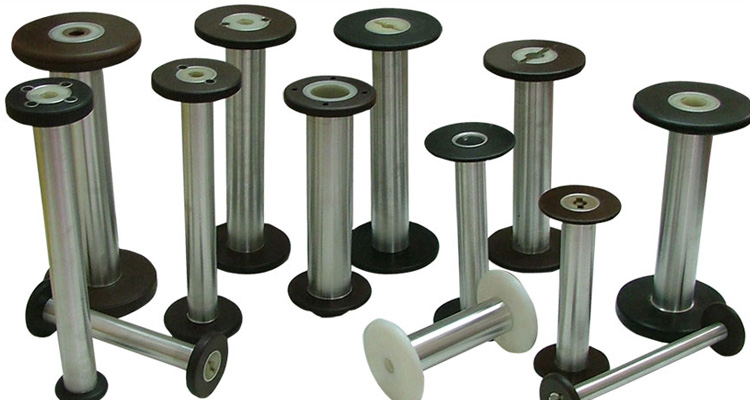All You Must Know About Bobbins
 Bobbins are a part of everyday lives for people dealing in industries of sewing, knitting, weaving, spinning, lacemaking, and other such processes. Some of these industries include rope yarn industries, cable twister industries, tire cord industries, fishnet twine industries, and other textile industries. Depending upon the industry, usage, and purpose, a wide variety of bobbins are available in the market like sewing machine bobbins, braided machine bobbins, perforated bobbins, Hemel bobbins, Allma machine bobbins, etc. These bobbins, again depending upon the usage and purpose, can be made of metal or plastic. Apart from knowing this, there is a lot more important information that you must be aware of about such industrial bobbins and their threads. Take a look below.
Bobbins are a part of everyday lives for people dealing in industries of sewing, knitting, weaving, spinning, lacemaking, and other such processes. Some of these industries include rope yarn industries, cable twister industries, tire cord industries, fishnet twine industries, and other textile industries. Depending upon the industry, usage, and purpose, a wide variety of bobbins are available in the market like sewing machine bobbins, braided machine bobbins, perforated bobbins, Hemel bobbins, Allma machine bobbins, etc. These bobbins, again depending upon the usage and purpose, can be made of metal or plastic. Apart from knowing this, there is a lot more important information that you must be aware of about such industrial bobbins and their threads. Take a look below.
Bobbin materials
Whether you must use plastic or metal bobbins, depends upon the machine you are using your bobbin in. Every machine type has its own specifications, and every machine specifies its requirements. So, check for what your machine manual says, and use your bobbin accordingly. And remember, not to alter the bobbin material or type as per your wish, or it may harm your machine or your process. Other than the basic metal and plastic that general bobbins are made of, there are special bobbins available that are made of special materials like rosewood, boxwood, olive wood, glass, ivory, bamboo, walnut, coral, and malachite.
Bobbin capacity
How much thread can your bobbin hold? Obviously, this depends upon the size and length of your bobbin. But, other factors that can vary the amount of thread that can be wound on a bobbin include the tension and the weight of the thread. With a tight and thin thread, you can wind more. Conversely, a very small amount of loose wound thick and heavy thread can be wound on a bobbin. However, speaking of regular bobbins, it has been experimented and found that a bobbin, so small in size, can generally wind 60 yards of thread on it!
Bobbin thread tension
The bobbin thread tension is of utmost importance in any processes involved with sewing, knitting, weaving, etc. If the tension is loose, the process will not be able to take place, meaning that either the fabric won’t be sewn or weaved, or the yarns will not be able to be knitted to form a fabric. Similarly, if the thread tension is too tight, the yarn will keep breaking at regular interval. Therefore, you need to adjust the thread tension at an appropriate level and maintain it throughout the process.
Bobbin thread colour
The thread of the bobbin is always matched to the thread of the reel used. This is because if standard white, grey, cream, or tan bobbin threads are used, the contrasting bobbin thread will be clearly visible on top. By matching the colour of the bobbin thread to the reel thread, the threads will blend, and the bobbin thread will not distinctively show.
Pre-wound or unwound bobbins?
Today, many companies offer pre-wound bobbins, wherein the bobbins are wound by high-tech machines that provide a smooth and uniform wind. This results in more thread wound than a self-wound bobbin. However, this makes the bobbins much expensive than unwound bobbins. Moreover, you may not always have the colours you wish. So, choosing pre-wound or unwound bobbins is entirely your choice.
Selecting your bobbin manufacturer
You are looking for good quality bobbins available at a reasonable price so that you don’t have to keep getting harassed about replacing your bobbins, and also don’t have to worry about your budget, especially when you are to purchase hundreds of bobbins for your industrial purposes. This is where you must approach Trim Engineering Services, one of the leading bobbin manufacturers in India, standardized with an ISO 9000:2008 certificate, for manufacturing and exporting a variety of textile machinery parts like bobbins, spools, cops, pirns, gaskets, and other accessories.

